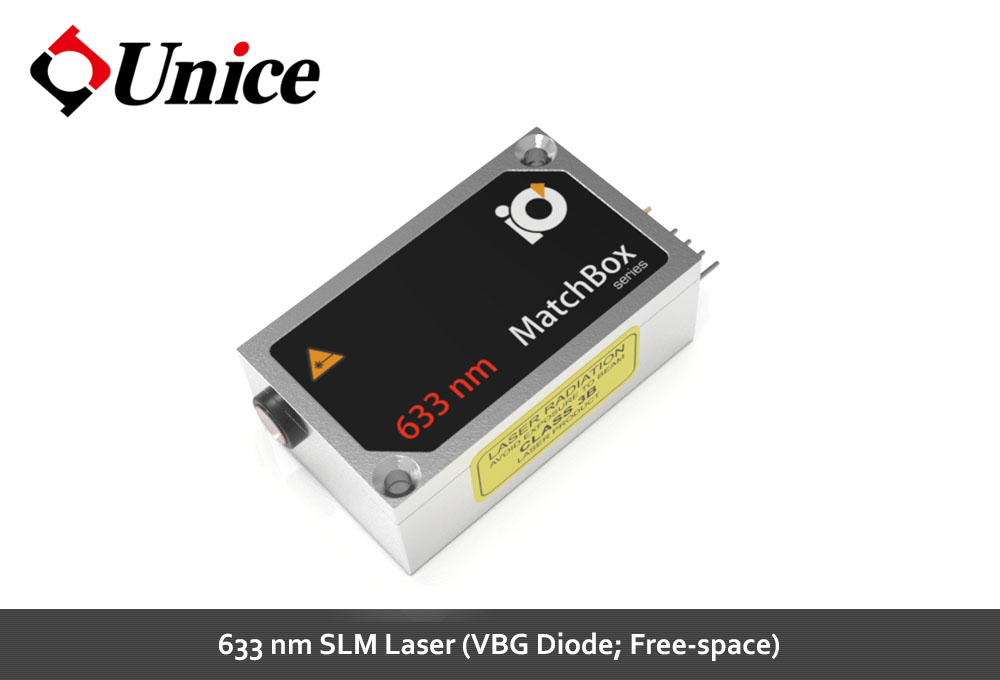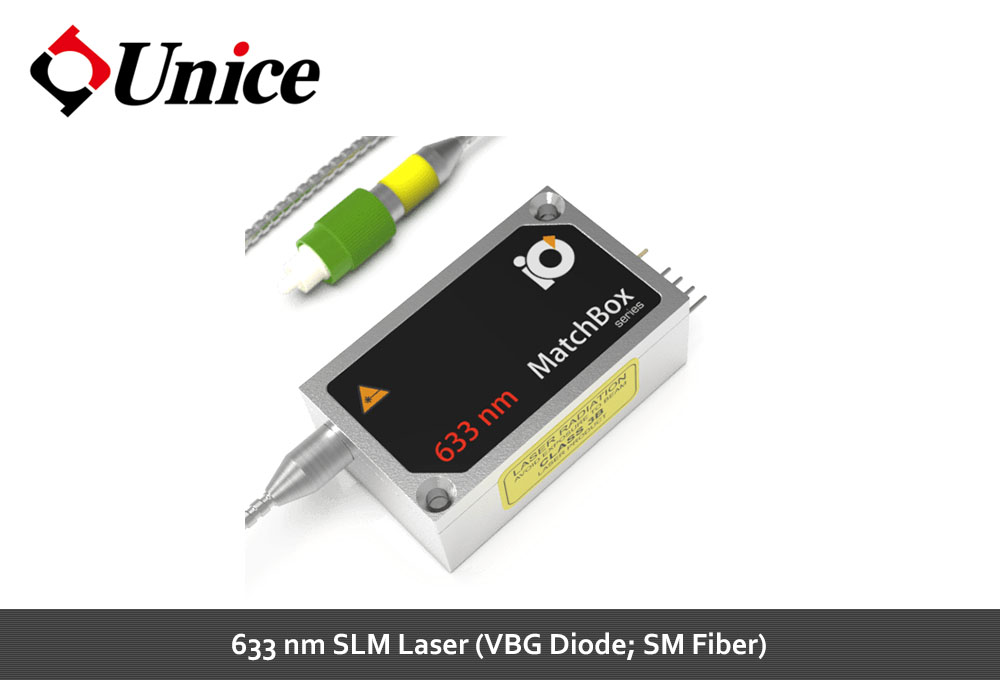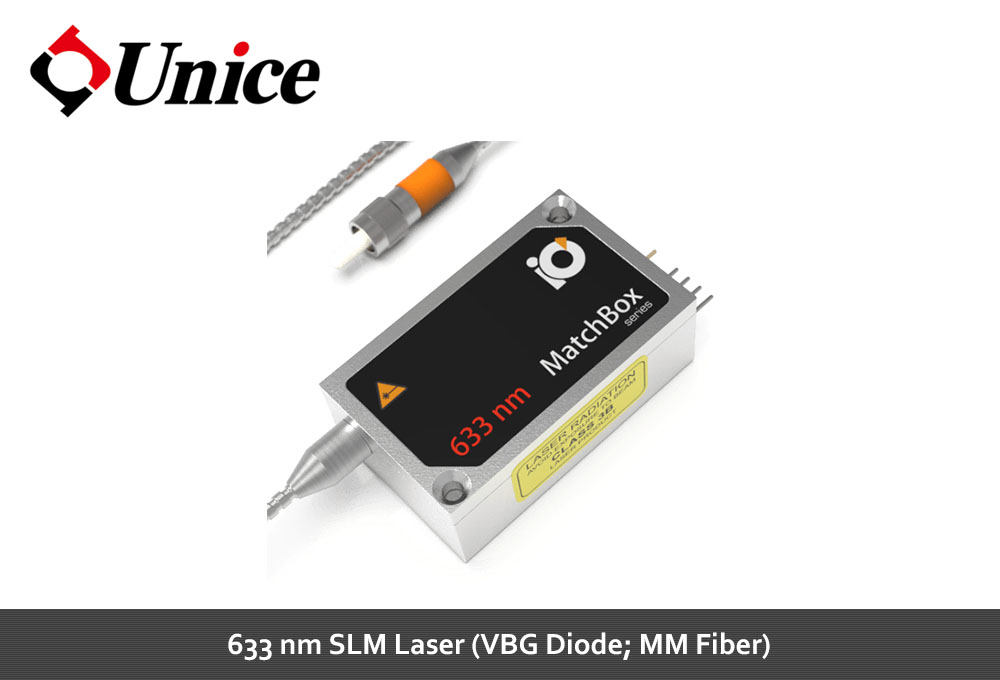| Central Wavelength, nm |
632.6 |
632.8 |
632.9 |
| Longitudinal modes |
- |
Single |
- |
| Spectral line width FWHM, pm |
- |
0.1 *1 |
1 |
| Output power, mW |
- |
70 *2 |
80 |
| Side-mode suppression ratio (SMSR), dB |
40 |
50 |
60 |
| Power stability, % (RMS, 8 hrs) |
0.01 |
0.03 *3 |
0.25 |
| Power stability, % (peak-to-peak, 8 hrs) |
0.05 |
0.15 *4 |
1 |
| Noise, % (RMS, 20 Hz to 20 MHz) |
0.05 |
0.25 *5 |
0.6 |
| Transversal modes |
- |
TEM00 |
- |
| Beam width (1/e2), mm |
- |
1 *6 |
1.3 |
| Beam height (1/e2), mm |
- |
1.2 |
1.8 |
| Horizontal beam divergence, mrad |
- |
1.2 |
1.5 |
| Vertical beam divergence, mrad |
- |
0.4 |
0.8 |
| M2 horizontal axis |
- |
1.2 |
1.4 |
| M2 vertical axis |
- |
1.3 |
1.6 |
| M2 effective |
- |
1.3 |
1.6 |
| Polarization direction |
- |
Horizontal *7 |
- |
| Polarization contrast |
1000 |
2000 |
5000 |
| Control interface type |
- |
UART *8 |
- |
| Operation mode |
- |
APC (CW) |
- |
| Modulation bandwidth, MHz |
- |
N/A *9 |
- |
| Input voltage, VDC |
4.8 |
5 |
5.3 |
| External power supply requirement |
- |
+5 V DC, 1.5 A |
- |
| Dimensions, mm |
- |
50 x 30 x 18 *10 |
- |
| Beam height from the base, mm |
9.9 |
10.4 |
10.9 |
| Heat-sinking requirement, °C/W |
- |
1 |
- |
| Optimum heatsink temperature, °C |
15 |
20 |
30 |
| Warm up time, mins (cold start) |
0.2 |
1 |
2 |
| Temperature stabilization |
- |
Internal TEC |
- |
| Overheat protection |
- |
Yes |
- |
| Storage temperature, °C (non-condensing) |
-10 |
- |
50 |
| Net weight, kg |
0.1 |
0.12 |
0.14 |
| Max. power consumption, W |
0.4 |
2 |
10 |
| Warranty, months (op. hrs) |
- |
14 (10000) *11 |
- |
| RoHS |
- |
Yes |
- |
| CE compliance |
- |
- General Product Safety Directive (GPSD) 2001/95/EC
- (EMC) Directive 2004/108/EC |
- |
| Laser Safety Class |
- |
3B |
- |
| OEM lasers are not compliant with |
- |
IEC60825-1:2014 (compliant using additional accessories) |
- |
| Country of origin |
- |
Lithuania |
- |
| *1 Measured with a scanning Fabry-Perot interferometer having 7.5 Mhz resolution, with scanning frequency of about 10 Hz. Interferometer testing is not provided for each laser being manufactured, the standard test is OSA measurement with 10-20 pm resolution instead. |
| *2 The output power of SLM lasers shall not be tuned and SLM performance is not guaranteed at power ratings other than factory preset. However, the power setting capability is not disabled. External attenuators are recommended instead. |
| *3 The long term power test is carried out at constant laser body temperature (+/-0.1 °C) using an optical power meter with an input bandwidth of 10 Hz. The actual measurement rate has a period of about 20 seconds to 1 minute. |
| *4 The long term power test is carried out at constant laser body temperature (+/-0.1 °C) using an optical power meter with an input bandwidth of 10 Hz. The actual measurement rate has a period of about 20 seconds to 1 minute. |
| *5 Noise level is measured with a fast photodiode connected to an oscilloscope. The overall system bandwidth is from 2 kHz to 20 MHz. |
| *6 Beam width and height are measured at 0.45 m from output aperture. |
| *7 For lasers without integrated optical isolators. |
| *8 Break-out-boxes AM-C8 and AM-C3 can be used for conversion of UART communication to either USB or RS232. |
| *9 SLM lasers shall not be modulated - use external modulators instead. |
| *10 Excluding control interface pins and an output window/fiber assembly. |
| *11 Whichever occurs first. The laser has an integrated operational hours counter. |
| Note: Product specifications are subject to change without prior notice to improve reliability, function or design or otherwise. |
| Typical Spectrum |
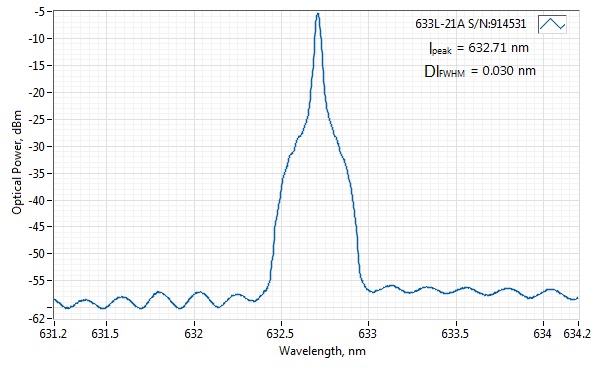 |
| Typical Near Field |
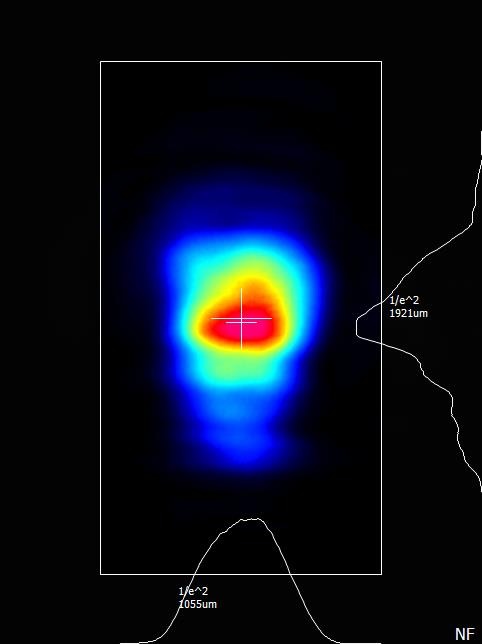 |
| Typical Far Field |
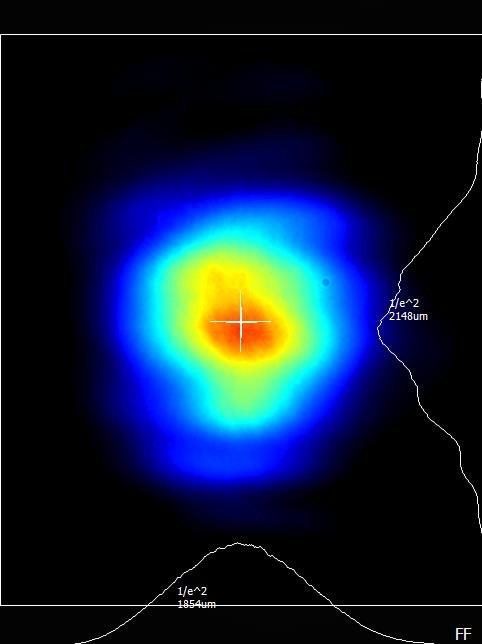 |
| Drawing |
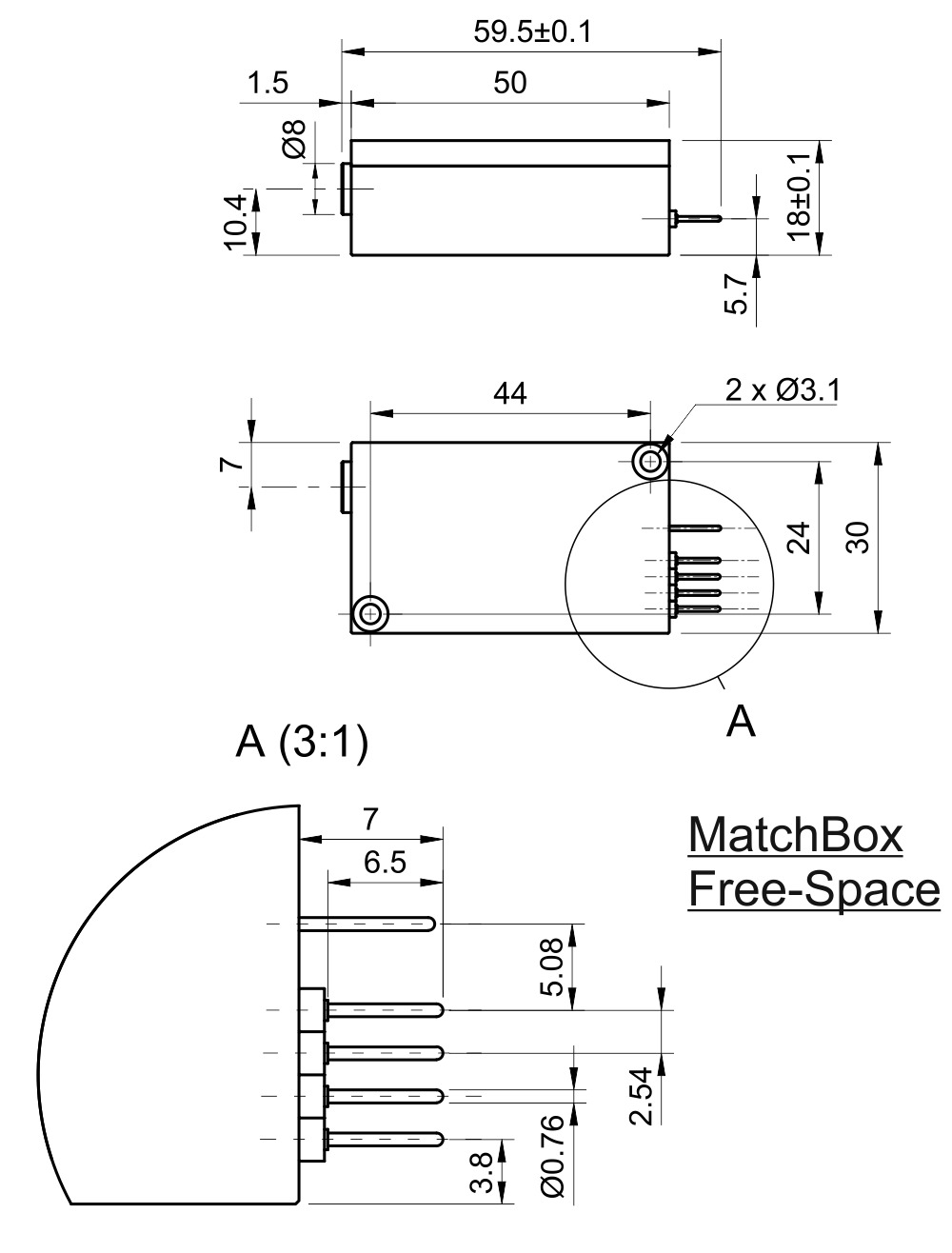 |
